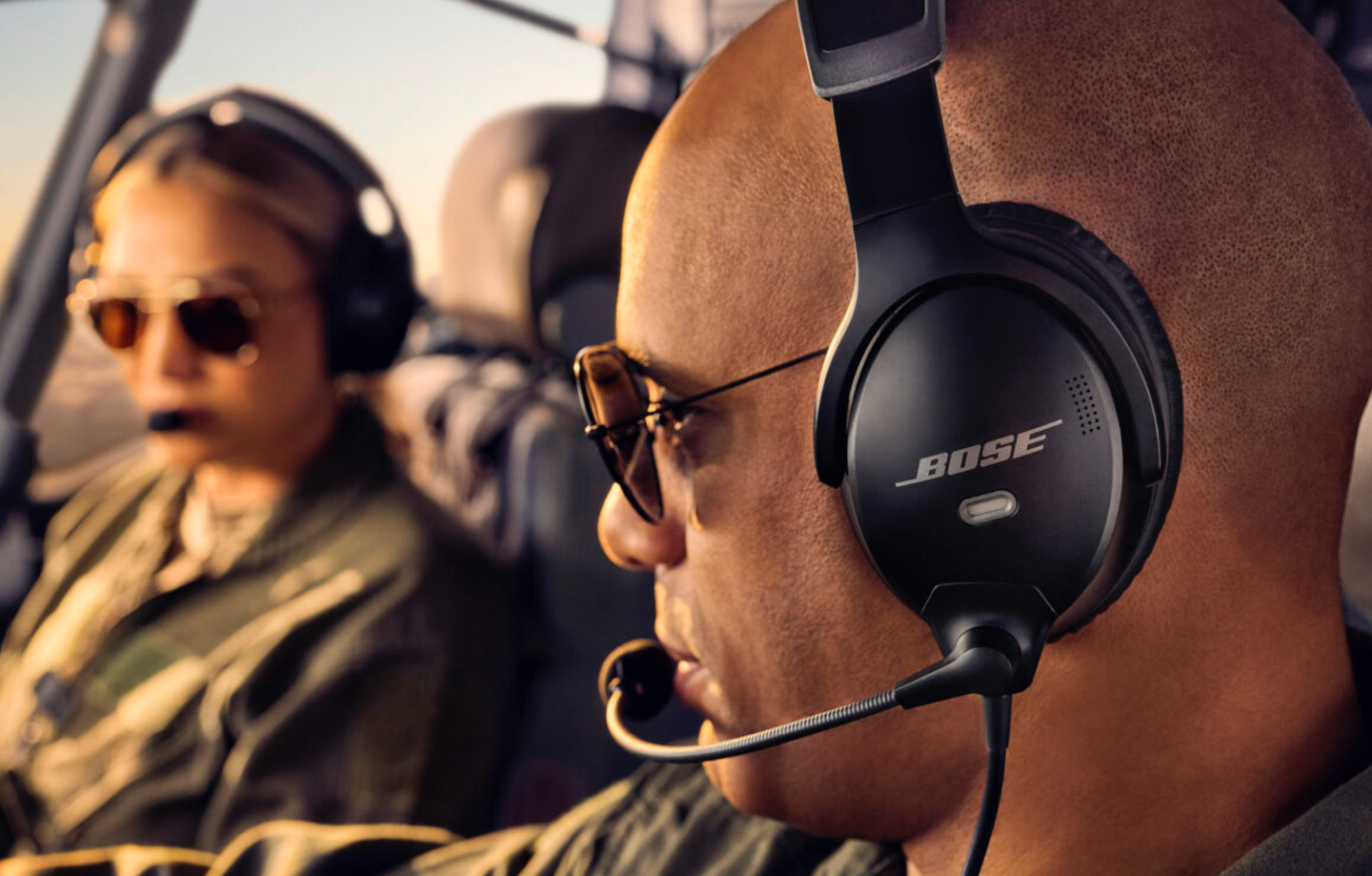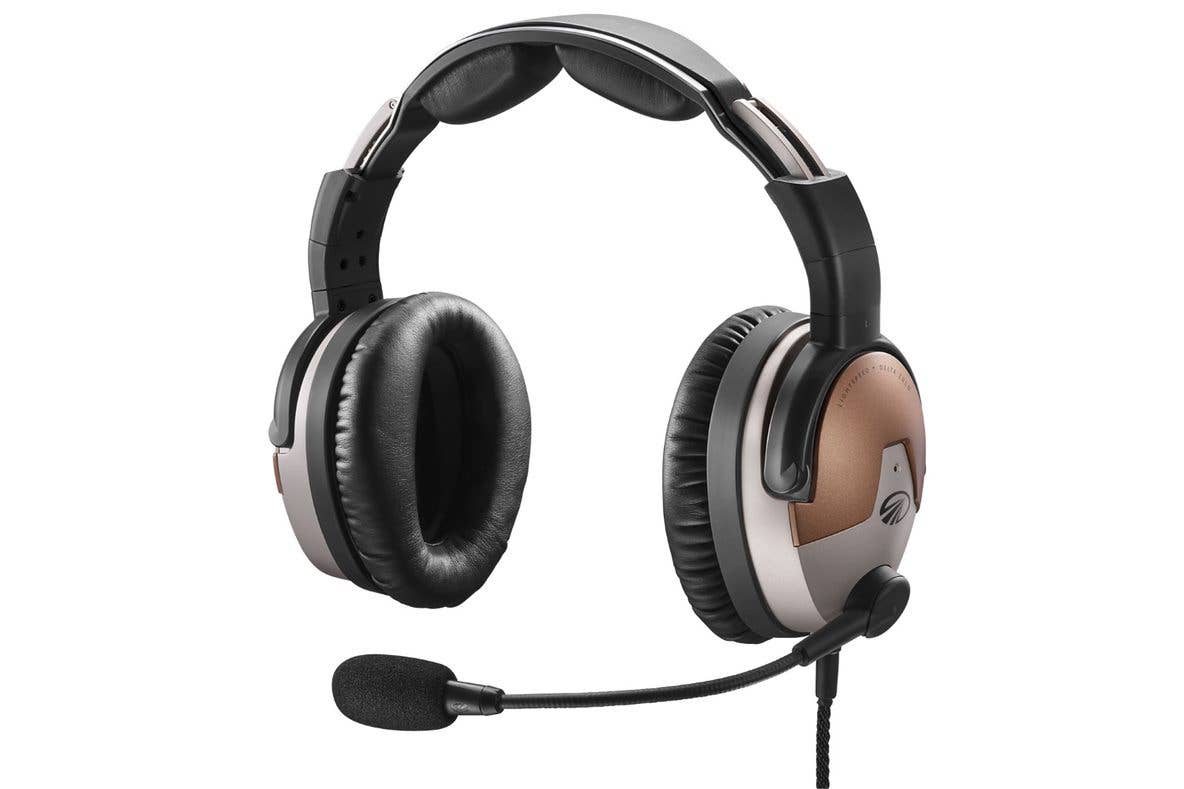Plane & Pilot 2017 Buyer’s Guide: Headsets
From cutting-edge technology to great bargains – headsets for 2017
The state of the art in headsets has advanced tremendously since many of us started flying, thanks to the work of longtime and startup headset makers, some of whom got their start in fields other than aviation and others who have been on pilots' heads forever. These days, the leading headsets feature active noise cancellation to electronically cancel out exterior noise in ways that are innovative and effective. High levels of noise attenuation used to mean bulky ear cups and high clamping forces, but no more. Thanks to their use of new materials and designs, headset manufacturers have made their products more comfortable than ever. Here's a rundown of the top headsets and a few great lower-cost alternatives.
AKG AV100
In a market of great products, one of the least known is the AKG AV100 headset, made by legendary German audio maker AKG, famous for its high-end microphones and headphones that are staples in high-end recording studios the world around. The AV100 is AKG's entry into the aviation headset market, and the headset is one that AKG is rightfully proud of making. Like most of its competitors, the AV100 is an ANR headset, and like some others it has good passive noise canceling, too. The combination of the two makes for quiet performance, and the angular over-the-ear enclosures are comfortable, lightweight and beautiful. The AV100 has the most unusual feature in the lineup, too, two LED map lights on the enclosures. More conventional features include Bluetooth connectivity (and an analog jack, as well), a 15-hour battery life and that famous AKG sound quality. And, boy, are they pretty.
PRICE: $850
TYPE: Active noise-cancelling
WEIGHT: 12.16 oz.
NOISE REDUCTION RATING: Not available
Learn more at AKG.
Pilot PA-1181T
One of the longest-running budget headsets on the market is the Pilot passive attenuation PA series. At a street price of just $185, the latest iteration, the PA-1181T, is rugged, durable and plenty comfortable for daily use---it's popular at flight schools and with new instructors watching their budgets. In terms of comfort, it's not your best bet for those five-hour legs, but for flight instruction it's a star, with one feature that few other headsets have, a push-to-talk button located on the ear cup. For instructors who often fly in other people's airplanes with no PTT on the right side, that's a godsend, as it prevents them from having to reach across the cockpit to key the mic. And as far as durability is concerned? I have a Pilot USA headset I bought in 1991 that's still going strong, and while it's no longer my go-to headset, I still often use it when I'm shooting air-to-air photography because, you guessed it, it has a push-to-talk switch on the ear cup so I can communicate even from the back of the airplane.
PRICE: $185
TYPE: Passive
WEIGHT: 15.9 oz.
NOISE REDUCTION RATING: 24 dB
Learn more at Pilot USA.
David Clark DC ONE-X
New for 2016 was the DC ONE-X, a premium headset from legendary maker David Clark that goes for a couple hundred dollars less than the Bose A20 and Lightspeed Zulu PFX, but still delivers an outstanding user experience. An active noise-cancelling corded headset, the DC10X is lightweight, though not as light as the Bose A20, and it's quiet, too, though not quite as quiet as its two higher-priced and higher-end competitors. The result is a headset that's not the best in the market at any one thing, but that's really good at doing just about everything. This, along with rugged build quality and the famous David Clark green domes, has made the DC ONE-X a hot seller in its first year on the market.
PRICE: $895
TYPE: Active noise-cancelling
WEIGHT: 12.3 oz.
NOISE REDUCTION RATING: Not available
Learn more at David Clark.
Bose A20
The best-selling premium headset in the world, the Bose A20 continues to be the leader in the industry, and for good reason. It's just a great product. It's light, supremely comfortable, has great noise cancelling, and this final point shouldn't be discounted: It's a beautiful object to behold. As if that weren't enough, Bose improved the A20 a while back, with auto-shutoff, auto-on for hard-wired corded units, and the ability to play Bluetooth-streamed music (and not just do phone calls). The control unit has also been improved, with clearer audio input icons. For those of us with an older A20, Bose offers an easy, do-it-yourself upgrade kit, so you don't have to buy a new headset, unless you find you really need one, or a second one or a third or fourth one!
PRICE: $1,095
TYPE: Active noise-cancelling
WEIGHT: 12 oz.
NOISE REDUCTION RATING: Not available
Learn more at Bose.
Lightspeed Zulu PFX
If you want quiet above all else, the Lightspeed Zulu PFX is the name of the game. We've never tested a quieter ANR headset, and even after a few years on the market, the PFX has yet to be matched. On top of that, the PFX is light, really comfortable and cool-looking, to boot. It's the entire package, and at its price point, it should be. Lightspeed still sells its excellent Zulu.2 for those who like really quiet and comfy headsets, but don't need the top of the line. The secret behind its flagship model is what Lightspeed calls Streaming Quiet ANR, a technology that constantly monitors outside noise and adjusts the headset's response to optimize quiet even as the conditions change. That, with a number of other cutting-edge features, makes the PFX the most technologically advanced headset on the planet, once again.
PRICE: $1,050
TYPE: Active noise-cancelling
WEIGHT: 13.9 oz. (including ear seals and mic boom)
NOISE REDUCTION RATING: Not available
Learn more at Lightspeed.
Lightspeed Tango
Lightspeed is famous for innovation. Just about every product it has introduced over the years has incorporated one or more features that pushed the state of the headset art. Without question, the most envelope-busting product of them all is the Tango wireless headset, which really delivers on the promise of wireless communication in the cockpit. Incorporating Lightspeed's excellent ANR technology, the Tango is really quiet (thanks, too, to good passive attenuation). But because there's no cord attached, the headset is really freeing, too, something that, frankly, takes a little getting used to after decades of managing cords. It's a welcome change. The key to the Tango is its intelligent controller, which links up the headset and your audio panel using the jacks you already have in the airplane. The result is a headset that has all the bells and whistles of the latest headsets, Bluetooth, volume control, active noise reduction and more, but without the wires. Cool.
PRICE: $800
TYPE: Wireless active
WEIGHT: 18 oz. (with battery)
NOISE REDUCTION RATING: Not available
Learn more at Lightspeed.
Clarity Aloft Link
For those pilots, like me, who don't mind an in-ear-style headset, the Clarity Aloft Link is a great alternative to the conventional over-the-ear design headset and for a good price. The Link, unlike other Clarity Aloft headsets, features a command module through which the user can route up to two Bluetooth devices like cell phones or music players. The Clarity Aloft Link gets its noise canceling passively, so there's no need for active noise canceling. The plugs themselves block the outside sound as effectively as foam earplugs, that's to say, very effectively. The tips allow the sound to pass through, so the result is great sound for what you want to hear and very little of the sound you don't. All there is to the "headset" is a lightweight adjustable framework that you wear over your ears to keep the mic securely in place, which it does quite nicely. For those pilots who are skittish about trying something so different, Clarity Aloft offers a 30-day money-back guarantee.
PRICE: $795
TYPE: Passive in-ear
WEIGHT: Less than 2 oz. (head weight)
NOISE REDUCTION RATING: 29-47 dB
Learn more at Clarity Aloft.
Liked these? Check outour in-depth pilot report on the new Lightspeed Zulu 3.

Subscribe to Our Newsletter
Get the latest Plane & Pilot Magazine stories delivered directly to your inbox






